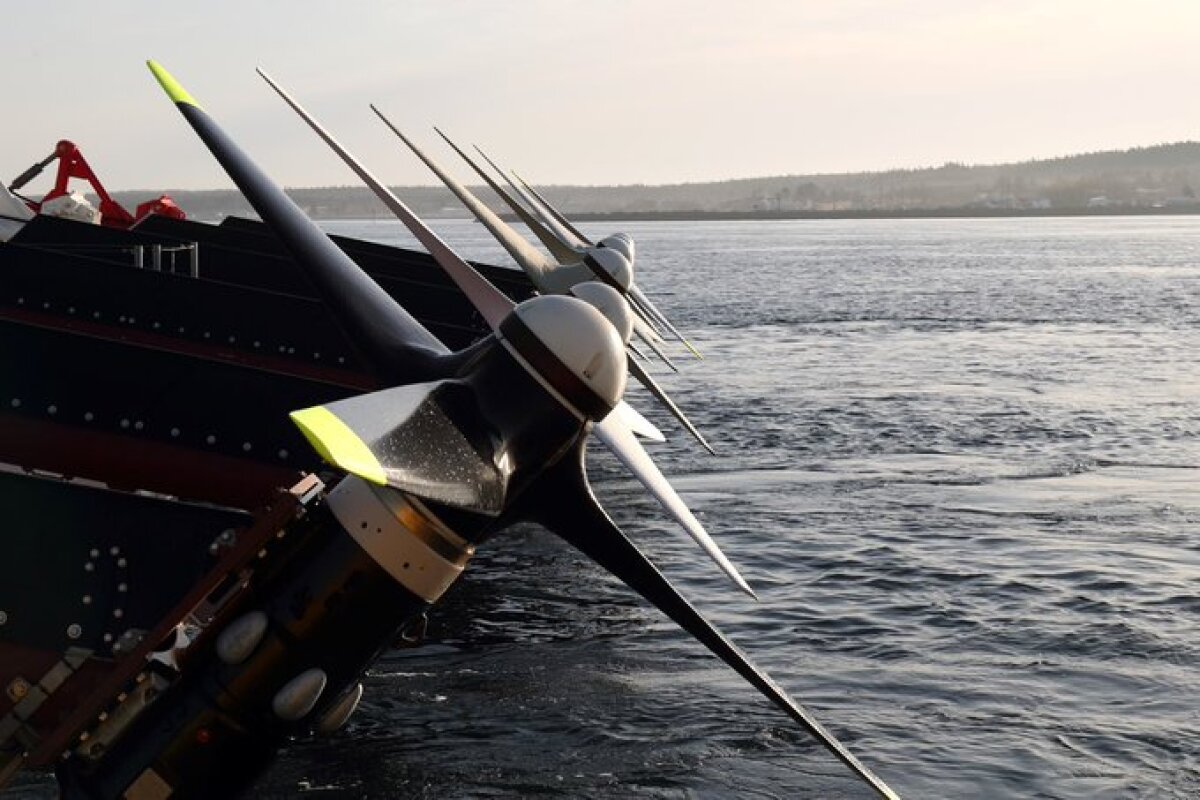Solar and wind are the stars of the show when it comes to renewable energy, but we're starting to see some exciting progress in turbines that harness the power of the planet's tidal patterns. Looking to leverage all that motion in the ocean is UK startup Sustainable Marine, whose floating tidal turbine rotors just breezed through a testing regime that simulated 20 years of real-world conditions.
The biggest tidal energy systems in action today rely on big and expensive underwater walls, with sluice gates that open and close as the tide changes and leverage the varying water levels to turn turbines. A different approach is to use floating platforms that can be towed out into channels with accelerated tidal flows and moored to the ocean floor. These use turbines attached to massive arms that are plunged into the underwater currents to generate power, and present a potentially far cheaper way forward.
This is the technology used by Scotrenewables Tidal Power, whose 2-MW floating tidal turbine platform managed to generate 3 GWh of electricity during its first year of operation back in 2018. After rebranding as Orbital Marine Power, the company then recently completed the build on a production version of what it calls the world's most powerful tidal turbine, which it says has the capacity to power 2,000 UK homes each year.
This type of floating, towable turbine platform is the solution being pursued by Sustainable Marine, which calls its solution the PLAT-I. It says this 420-kW platform is the first of its kind in the world, with the main point of difference being that its turbines are mounted to individual modules that allows for easier assembly on site, using small support vessels and no heavy machinery. The platform can be launched and towed in water just two meters (6.5 ft) deep, and like Orbital Marine Power's, the turbines are fixed to large arms that can be swung up out of the water for easy maintenance.

But the company has some testing to do first. This includes trials of the PLAT-I platform in the Grand Passage in Nova Scotia's Bay of Fundy, which is home to the highest tides in the world. Separately, the company is putting its "ultra-durable" carbon-fiber rotor blades through their paces.
These tests took place the National University of Ireland, Galway and subjected the company's four-meter (13-ft) rotor to "accelerated lifetime testing," covering a variety of performance parameters such as stress, strain, vibration and its performance under fatigue loading. This passing of the "20-year test" followed successful testing of a larger 6.3-m (20.7-ft) turbines that will also be used aboard the PLAT-I platform, depending on the conditions.
"Our new four-meter rotor blade has proven to be ‘ultra-durable,’ providing full confidence in the design and structural integrity," says Ralf Starzmann, Vice President of Business Development at Sustainable Marine. "Reliability is a key factor in tidal turbine development, particularly as we are now moving towards our first commercial projects.”
Sustainable Marine is currently in the process of piecing together what is says will be the world's first floating tidal energy array, which is being installed in multiple phases in the Bay of Fundy. Working with the highest tides in the world, Sustainable Marine says it will be able to generate up to 9 MW of tidal energy to feed into the local grid and power around 3,000 homes each year. The first phase of the project is expected to commence this year.
Source: Sustainable Marine





